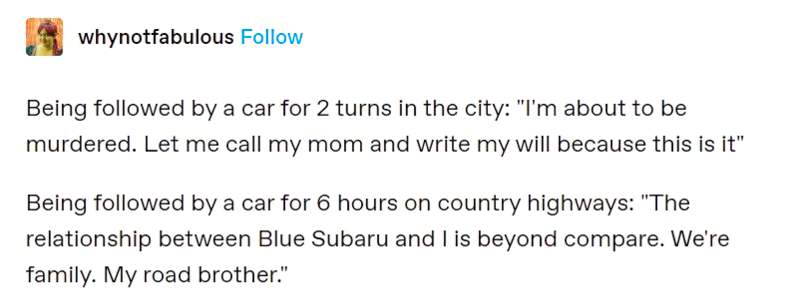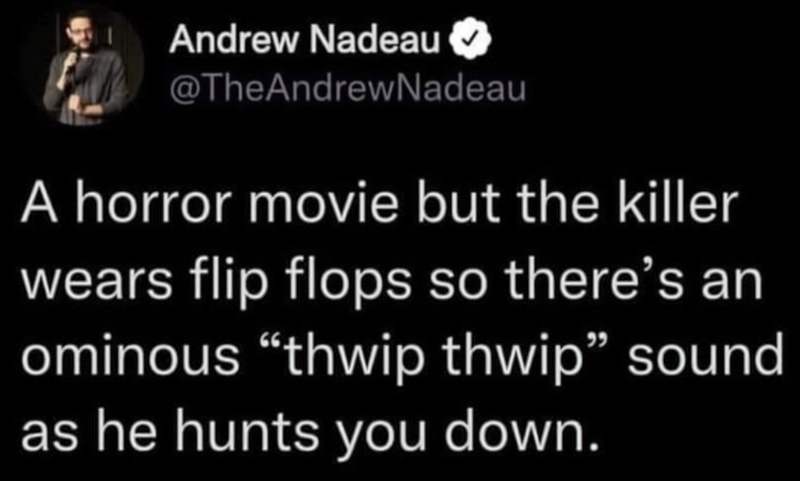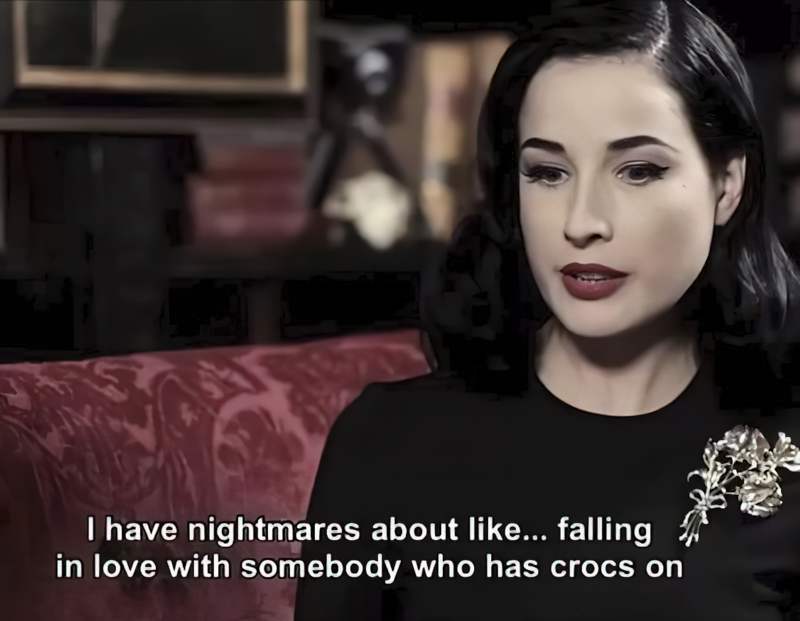No contemporary literature is more permeated by the spirit of the land than Australia’s.
Richard Eder, reviewing Dream Stuff by David Malouf (2000)
I’ve heard it said that Australia is like Texas. It’s big, it’s got a lot of “empty” space, and the international view of both regions comprises dust and desert with a few towns and cities to break up the monotony. In reality, both Texas and Australia are so big they contain diverse landscapes and landforms. The towns and cities have distinct personalities and cultures. Austin isn’t Houston, and Melbourne sure ain’t Darwin.
Tim Winton explores this connection in the opening to Eyrie:
Port of Fremantle, gateway to the booming state of Western Australia. Which was, you could say, like Texas. Only it was big. Not to mention thick-skinned. And rich beyond dreaming. The greatest ore deposit in the world. The nation’s quarry, China’s swaggering enabler. A philistine giant eager to pass off its good fortune as virtue, quick to explain its shortcomings as east-coast conspiracies, always at the point of seceding from the Federation. Leviathan with an irritable bowel.
Tim Winton, Eyrie
Let’s take a look at how Australian authors describe landscapes in Australian fiction. Some of these excerpts are exactly what you’d expect from A Description of Australia. Other literary snapshots broaden the view.
…Dorothea Mackellar was right. Except for works by Indigenous people, Australian literature has one deep and abiding theme — the continent’s ‘beauty and her terror’.
Tony Smith, Eureka Street
THE ARSONIST: A MIND ON FIRE BY CHLOE HOOPER (2018)
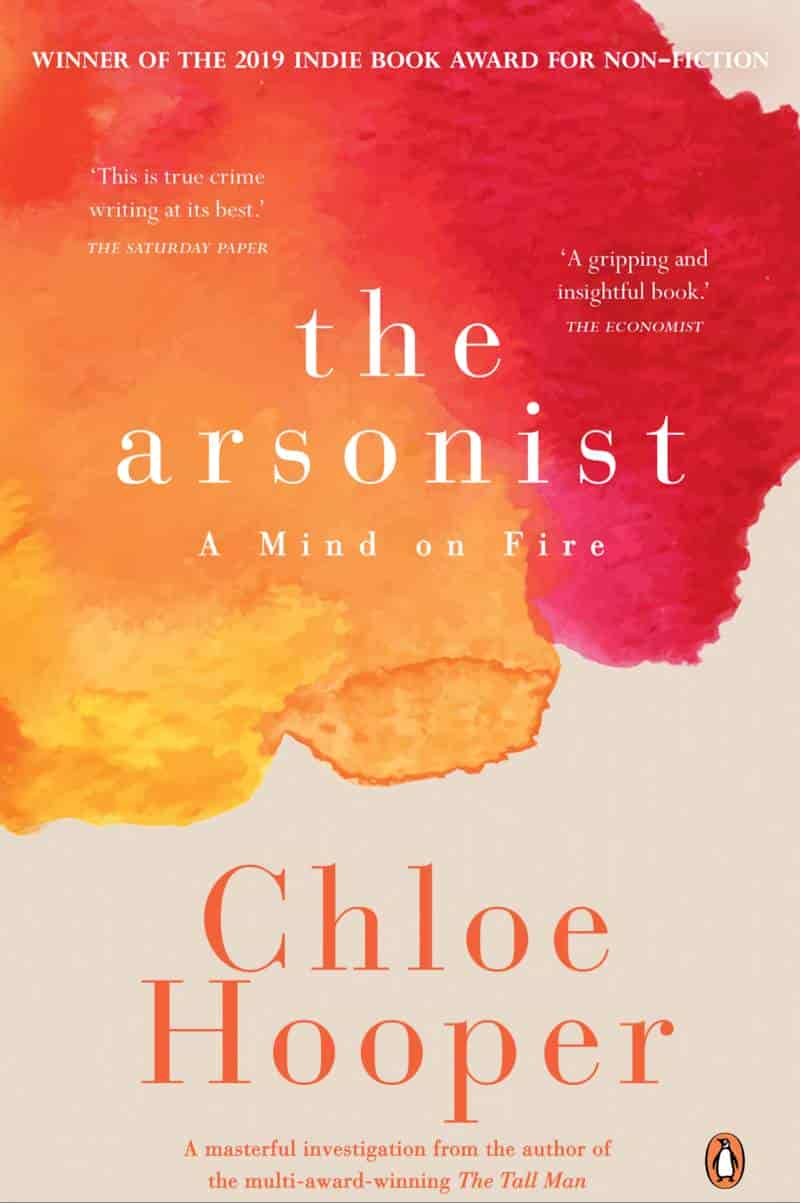
The true story of one of the most devastating wildfires in Australian history and the search for the man who started it.
On the scorching February day in 2009, a man lit two fires in the Australian state of Victoria, then sat on the roof of his house to watch the inferno. What came to be known as the Black Saturday bushfires killed 173 people and injured hundreds more, making them among the deadliest and most destructive wildfires in Australian history. As communities reeling from unspeakable loss demanded answers, detectives scrambled to piece together what really happened. They soon began to suspect the fires had been deliberately set by an arsonist.
The Arsonist takes readers on the hunt for this man, and inside the puzzle of his mind. But this book is also the story of fire in the Anthropocene. The command of fire has defined and sustained us as a species, and now, as climate change normalizes devastating wildfires worldwide, we must contend with the forces of inequality, and desperate yearning for power, that can lead to such destruction.
Case in point, the concept of snow does not frequently go hand in hand with the international image of Australia. However, parts of Australia do get snow.
Chloe Hooper’s non-fiction true crime story The Arsonist is about a more familiar Australian phenomenon, especially in the age of climate disaster. But the book opens with a description which sounds more like Nordic noir than hot, Australian gothic:
Picture a fairytale’s engraving. Straight black trees stretching in perfect symmetry to their vanishing point, the ground covered in thick white snow. Woods are dangerous places in such stories, things are not as they seem. Here, too, in this timber plantation, menace lingers. The blackened trees smoulder. Smoke creeps around their charcoal trunks and charred leaves. The snow, stained pale grey, is ash. Place your foot unwisely and it might slip through and burn. These woods are cordoned off with crime scene tape and guarded by uniformed police officers.
The Arsonist: A mind on fire by Chloe Hooper
Many Australian novels revel in the Australian-ness of the landscape, describing the flora and fauna specific to Australia. Sometimes this is juxtaposed for effect against introduced species and non-vernacular architecture (see examples from Three Dog Night by Peter Goldsworthy, below). In a crime novel about Australian arson, there are many (darkly) beautiful passages about a charred landscape, but Australian natives have evolved to burn. Not so for introduced species. So after that opening, we get a description of what much of Australian forest looks like these days:
At the intersection of two nondescript roads, Detective Sergeant Adam Henry sits in his car taking in a puzzle. One one side of Glendonald Road, the timber plantation is untouched: pristine Pinus radiata, all sown at the same time, growing in immaculate green lines. On the other side, near where the road forms a T with a track named Jellef’s Outlet, stand rows of Eucalyptus globulus, the common blue gum cultivated the world over to make printer paper. All torched, as far as the eye can see.
The Arsonist: A mind on fire by Chloe Hooper
Next, a wide-angle view of how people have shaped the landscape well beyond its natural capacity. This description is from a moving vehicle, but feels ominous, more like from a floating drone, which evokes under-sea imagery, of being pursued by a giant fish:
Outside, a string of towns nestled in the rolling green farms of Gippsland, and then it changed to coal country. Latticed electricity pylons multiplied closer to their source, their wires forming waves over the hills.
Turning a corner beyond Moe, Henry saw the cooling towers and cumulus vapours of the first power station, then, round the next bend, a valley ruled by the eight colossal chimneystacks of another station called Hazelwood. A vast open-cut coalmine abutted the highway. Layers of sloping roads descended deep into a brown core—the carbon remnants of a 30-million-year-old swamp—where dredgers, shrunk by a trick of the eye to Matchbox versions, relentlessly gouged the earth.
The Arsonist: A mind on fire by Chloe Hooper
THE LABYRINTH BY AMANDA LOHREY (2020)
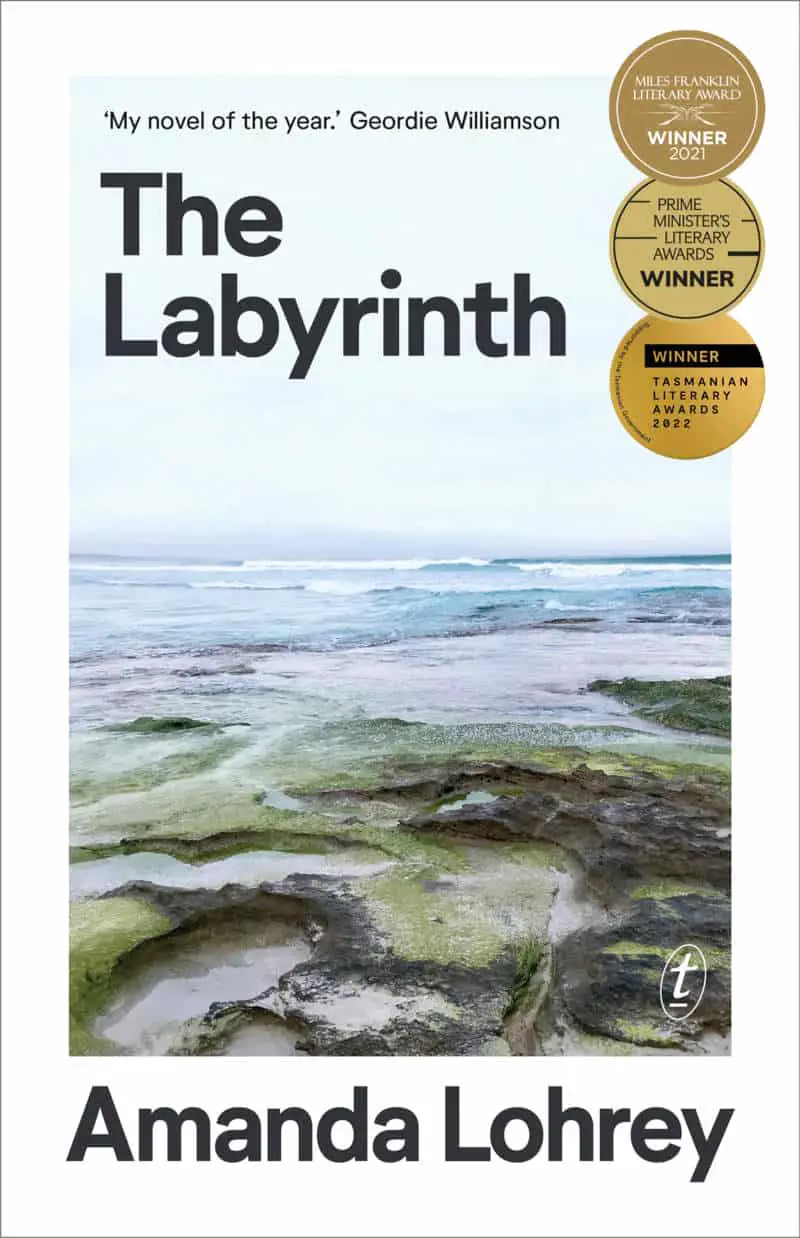
Erica Marsden’s son, an artist, has been imprisoned for homicidal negligence. In a state of grief, Erica cuts off all ties to family and friends, and retreats to a quiet hamlet on the south-east coast near the prison where he is serving his sentence. There, in a rundown shack, she obsesses over creating a labyrinth by the ocean. To build it—to find a way out of her quandary—Erica will need the help of strangers. And that will require her to trust, and to reckon with her past.
Amanda Lohrey writes beautifully of Australian landscapes in her Miles Franklin Award-winning novel The Labyrinth. This novel is set in an imagined small seaside hamlet named Garra Nalla on the east coast of Australia, near Sydney. (Lohrey first imagined this hamlet in her 2009 novel Vertigo.) Since then, a fire has raged through. (The stories are otherwise not linked.)
Lohrey describes landscapes and weather in sensuous detail, rich with mythic and biblical implications. To visit her son – an italicised monthly nightmare – Erica must drive through a narrow mountain pass with 36 hairpin bends surrounded by fire-scarred sclerophyll forest. On the far side the jail sits in a hellish valley damaged by coal mines and unemployment.
But her coastal haven is no paradise, as anyone contemplating a sea change should note.
The Sydney Morning Herald review
There is no shop, pub or petrol bowser, just a scattering of dwellings. […] The wild coastal landscape is an apt backdrop for Erica’s powerful emotions. She resists trying to tame her environment or improve the basic shack she lives in as they mirror her potent feelings. Amanda Lohrey describes Erica’s mental state and memories in a fluid, dream-like way.
Alex Bligh, Otago Daily Times review
…the hamlet of Garra Nalla by a river and lagoon near the sea. This is a place of beauty, with flowering gums that make a ‘palette of pinks and orange and gold’ and she-oaks that provide ‘a subtle blur of fine filaments … drooping to the ground in wispy canopies’. Garra Nalla has escaped development because a rip on the beach claims lives regularly.
Tony Smith, Eureka Street (reviewing Vertigo)
Lohrey is someone who really knows trees and plants. I can probably pick a macrocarpa, but had no idea it was a variety of cypress.
the verges are grassy and pocked with shallow bandicoot hollows and the gutters are roughly excavated swales, deep and lined with sharp-edged stones that sprout weeds.
Beside the edge of a cliff, just a metre away from the blowhole, my left foot drops into a sinkhole created by the roots of an old macrocarpa cypress…
The Labyrinth by Amanda Lohrey
At low tide the sandbank at the centre of the lagoon is exposed, but the tide is on the turn and the waters of the ocean are flowing in through the barway and filling the narrow channel on the northern side. A white egret has alighted on the sandbank and with thin black legs is prowling the edge in a slow stalking tread, hoping to pluck a mullet from the murky swirl of incoming water.
The Labyrinth by Amanda Lohrey
The description below doesn’t sound so much like Australia, but this is the Australian main character having fallen into a ‘hallucinatory dream’. The dream combines her local Australian landscape with something more primal, stretching back to her European ancestors (we assume):
I am in the highlands, walking alone along a duckboard raised above swampy turf. I turn a corner and there, in a mossy clearing, is a lake, its surface so calm and still that I feel I might walk home on it. Around the lake’s rocky rim a narrow path has been cut through alpine bush and the sinewy roots of trees lie exposed in the dirt. In the distance a mountain peak rises out of a pale grey mist, its flinty crag reflected in the water.
The Labyrinth by Amanda Lohrey
Here is a description of her awake world at night:
That night, prowling the headland, I stop and sit on a flat rock above the blowhole. The sea is calm, like a vast pool of shallow water. There is a full moon and the long silvery flare of light on the water flows towards the horizon like the wake of a ship. On the horizon a boat is lit up like a floating carnival. And then I hear it, a loud sobbing, an aching wail that rises above the soft wash of the surf. It’s only a short pathway through boobialla and wind-blasted she-oaks to where the sound is coming from, a house with all its lights on, though it’s after midnight, and I walk towards it, careful to avoid the bandicoot holes that pockmark the thick spongy grass of the headland.
The Labyrinth, Amanda Lohrey
Boobialla is also known as “Native Juniper” or “Coastal Boobialla” (scientific name Myoporum insulare).
Often confused with rodents, bandicoots are small, omnivorous marsupials. Bandicoots are found throughout Australia and can be common in coastal areas of New South Wales. They can live in a wide variety of habitats, from rainforests to wet and dry woodlands to heath.
NSW Govt
TREASURE AND DIRT BY CHRIS HAMMER (2021)
AN OUTBACK OPAL MINE AT NIGHT NEAR THE QUEENSLAND BORDER
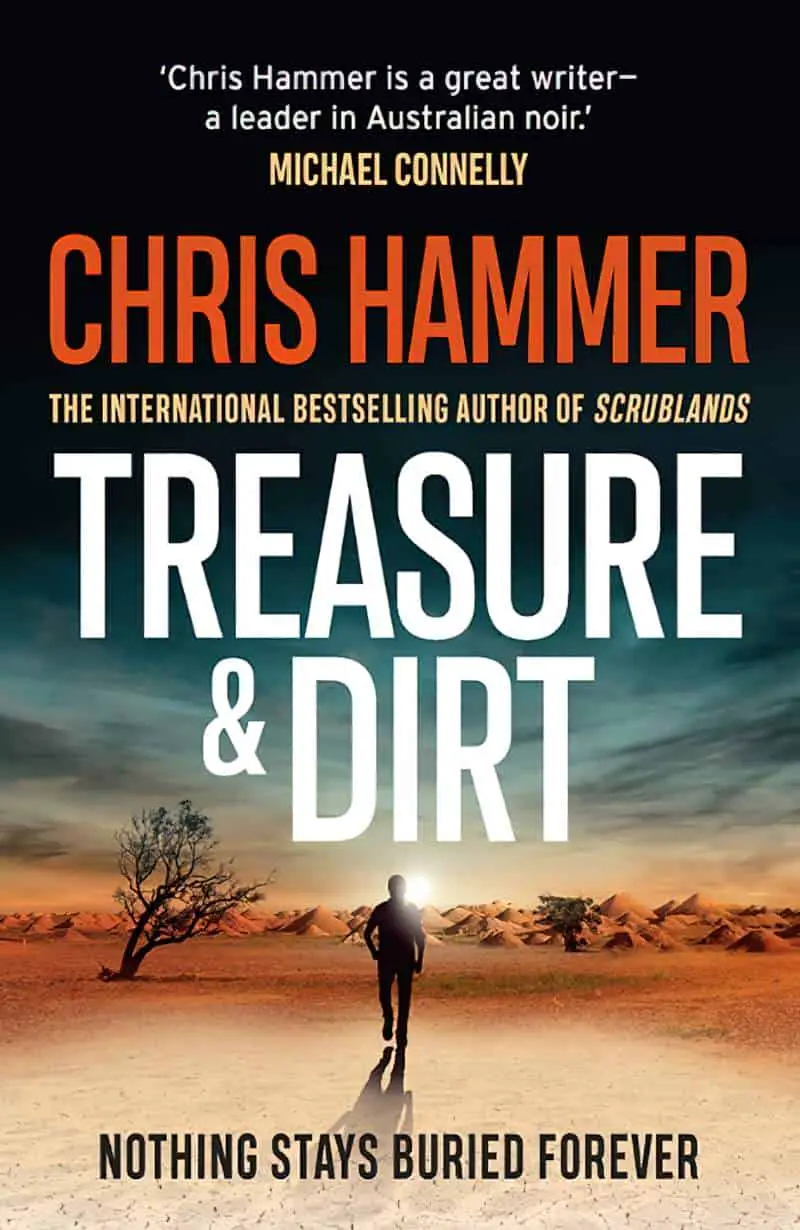
In the desolate outback town of Finnigans Gap, police struggle to maintain law and order. Thieves pillage opal mines, religious fanatics recruit vulnerable young people and billionaires do as they please.
Then an opal miner is found crucified and left to rot down his mine. Nothing about the miner’s death is straightforward, not even who found the body. Sydney homicide detective Ivan Lucic is sent to investigate, assisted by inexperienced young investigator Nell Buchanan.
But Finnigans Gap has already ended one police career and damaged others, and soon both officers face damning allegations and internal investigations. Have Ivan and Nell been set up and, if so, by whom?
As time runs out, their only chance at redemption is to find the killer. But the more secrets they uncover, the more harrowing the mystery becomes, as events from years ago take on a startling new significance.
For in Finnigans Gap, opals, bodies and secrets don’t stay buried for ever.
This crime story opens in the Australian Outback at an Opal Mine. Until townies go out into the desert, you don’t realise you’ve never really experienced true darkness. The prologue to this novel does a great job of describing not just the absolute darkness of the Outback, but also the way sound travels. The characters are wearing night-vision goggles, which lends a hyper-real vibe to the setting. Note that Tim Winton has also described an Australian landscape in hyper-real fashion in one of his The Turning short stories (“Big World”, in which Winton’s narrator describes the Australian sky of his youth as ‘blue as mouthwash’. Another lurid colour, and a brilliant way to keep the colour imagery going. Later, when the Kombi fries, the sky turns ‘acid blue’.) Be it the harshness of an Australian summer’s day or the darkness of an Australian Outback night, there is something neon-hyperreal about Australia when you really stop to consider its magnitude, its brightness, its danger.
Before the story begins, it pays to know what ‘ratting’ means in the context of mining. Ratting is when someone other then the claim owner ventures down a mine at night and steals the opal. In Australia, ratters are especially notorious at Lightning Ridge.
THE NIGHT IS PERFECT FOR RATTING. A LAYER OF HIGH CLOUD HAS SPREAD across the sky, blocking out the moon and the stars, sucking light from the world. Only the night-vision goggles—military grade—allow for progress, the driver careful in a landscape rendered luminous, easing the old truck between trees silhouetted against the radiant earth. It’s like a video game, glowing and hyperreal, bleeding light at the edges. And yet this is life, unmistakably authentic.
[…]
At the top of a rise above the far end of the opal fields, the driver slows the truck to a stop. This far along, The Way, the road linking the West Ridge to the town, the only access, the only egress, has splintered into multiple tracks. They drop the cockatoo, with his goggles and army surplus walkie-talkie. From here, he can look back at The Way as it undulates along the ridge line from Finnigans Gap ten kilometres away. The town itself is hidden in its hollow, its aura glowing through the night-vision goggles, but the intervening path is clear.
Treasure and Dirt, excerpts from the prologue by Chris Hammer
Even before they find the body, the landscape is authentically dystopian, darkness juxtaposed against the “obscenely bright” glow courtesy of night-goggles. The cockatoo reminds us we are in Australia. By the way, you do see a lot of rusted-out machine parts and abandoned cars on the side of the road when you drive through Outback Australia. They’re known as “bush wrecks”, and there’s a disproportionate number of broken-down Kombi vans. (If you know anything about Kombis, this won’t come as a surprise.) Restorers love to find them, especially around Alice Springs, where there’s no moisture in the air to cause rust. (It is absolutely bizarre to be in Alice Springs at night in winter, to know the temperature is below freezing, but you can’t see your breath. There’s no dew on anything.)
Through the thermal-imaging goggles, the bonnet of the truck glows obscenely bright, its heat making it shine like a beacon. He knows no one else can see it, no one without the goggles, just the cockatoo on the ridge, but it makes him nervous all the same. And yet he can’t afford to go any faster; the landscape is too treacherous, with its exposed mine shafts and ventilation holes, its mullock* heaps and fallen trees and rusted-out machine parts. There’s been no rain for four or five days, and yet he’s concerned about lingering mud, the potential to skid, to lose control. He needs to avoid any mistakes. A puncture would leave them temporarily vulnerable; a broken axle would be disastrous. Finally, their destination comes into sight, marked by the darkened caravan.
[…]
There is no sign of life. His truck is here, which is concerning. But it sits pitch-black against the glowing earth, its engine cold. The leader approaches the caravan, itself black, registering no heat signature whatsoever, apparently devoid of life.
Treasure and Dirt, excerpts from the prologue by Chris Hammer
*Mullock: This is an Autralian/NZ term, referring to rock which contains no gold or from which gold has been extracted. Metaphorically, it also means something worthless, especially useless information.
Below, we have a description of the way sound travels through the Outback at night, plus some mention of recognisably Australian flora:
As he waits, he listens. The night is silent, as if in anticipation. There is no wind, not even up here on the ridge, nothing to animate the darkness, nothing to rustle the leaves on the sparse ironbarks and box gums. A dog barks in the distance, kilometres away, emphasising the void. It is so very dark without the goggles. It’s all he can do to perceive the edge of the van against the clouded sky.
Treasure and Dirt, excerpt from the prologue by Chris Hammer
THREE DOG NIGHT BY PETER GOLDSWORTHY (2003)
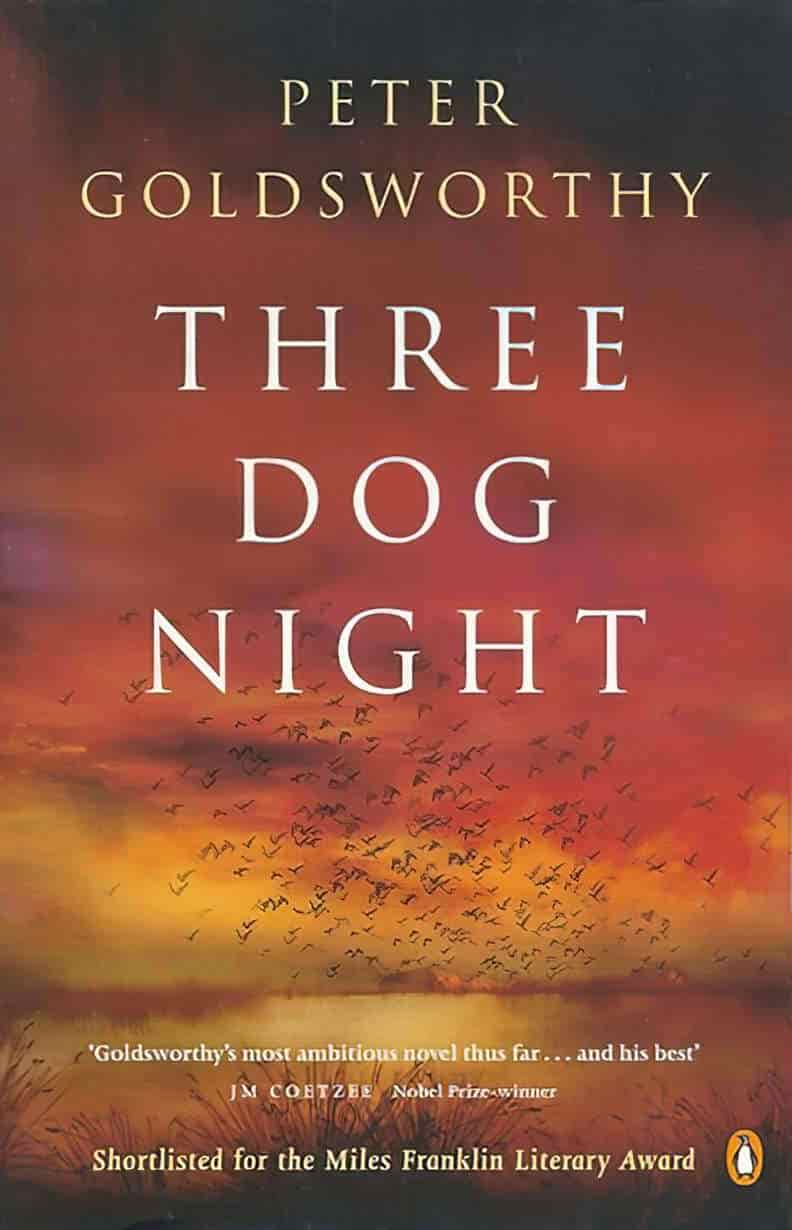
Is it possible to be too much in love? After ten years in London, Martin Blackman returns to Adelaide with his wife and fellow psychiatrist Lucy, blissfully happy. But then he introduces her to his old friend Felix, once a brilliant surgeon, now barred from practising and changed beyond recognition. In the complex triangle that develops, Martin must decide just how far he is prepared to go for Felix. So begins the darkest of journeys for all three of them…
Three Dog Night by Peter Goldsworthy (2003) opens with a man in the heady, liminal phase of romantic love. He drives through the Adelaide Hills and the surrounding landscape reflects his joy:
There might be higher mountains on the planet than the Adelaide Hills, but they are no closer to heaven. Each valley is a little deeper and greener than the last, and each ridge, a little higher and bluer, seems another step in some sort of ascension. Even the names of the steps have a heavenly sound; Lucy speaks the words softly as the freeway exits slide past, big-print, white on green. Littlehampton. Oakbank. Aldgate. Bridgewater.
Music to my ears. I might be hearing these familiar place names for the first time, the imported words back where they belong, melting on an English tongue.
With the new sounds come new sights, as if I am seeing the hills for the first time also, through her fresh eyes. Our week-old red hatchback carries us steadily upwards. Each valley cups a single small town in its palm: a church spire, sometimes two, an old stone school, a single aisle of craft shops and Devonshire tea-rooms and petrol pumps.
Three Dog Night by Peter Goldsworthy
At this early part of the story, the first person narrator is enjoying the European-ness of the Adelaide Hills with its obvious German settler history. His new girlfriend, new also to Australia tells him she didn’t expect “an English country garden”. But of course, the Adelaide Hills are not representative of Australia. The narrator will soon be drawn into the less familiar, less cosy Australian Outback, with a half day’s drive between settlements, where you can feel very much alone, where this Australian born man will discover the country he thought he knew so well, and which seems utterly delightful after returning from a ten year stint in London.
The couple are on their way to visit the narrator’s friend on a South Australian farm, a landscape which reminds the British girlfriend of Tuscany (with parrots):
The view…is calming: a geometric patchwork of orchard groves and vine rows and plush carpet-squares of lucerne and clover. Dairy cattle graze in the rich pastures, heads down: black and white Friesians, big-uddered Jerseys, the occasional brown horse a neck above them. Parrots feed noisily in the giant river gums along the creek, crimson rosellas, blue and yellow lorikeets.
A jacaranda—Jacaranda mimosifolia—is in late, last flower, a carpet of dusty purple at its feet. An apricot tree is so hevy with fruit that its limbs, bent concave, might be mistaken at a distance for a weeping willow. The sun pours its honey over our heads, bees sizzle among the ripening fruit, magpies roll marbles about their mouths in the high trees.
I think, Here, surely, is the last step in today’s ascension, the actual bridge that connects heaven to earth.
Three Dog Night by Peter Goldsworthy
Australia hasn’t infiltrated this narrator yet, but he’s starting to get the idea he can’t fully trust his take on it:
Enamel skies, lush pastures, rainbow-painted parrots. Walking down through the cherry trees it strikes me that the world of Australia is less matter than mood—a mood worn on the outside of the body, like a garment. A summer garment.
…
The cockatoo eyes me out the side of its head, fluffing powder-pink breast feathers.
Three Dog Night by Peter Goldsworthy
The novelty of the bright, cosy Australia gradually wears off as the narrator becomes entangled in the life of an old friend who has immersed himself in ancient Aboriginal culture, with harrowing and unfamiliar rituals. In Australia, night-time can be harrowing, but so can the oppressive heat:
Night is approaching as we crest the saddle of the woodcroft valley, the sun gone, the sky fast fading, denim-blue to grey.
…
Sunday, Christmas Day, and a morning already hotter than any Christmas in memory. A February morning, perhaps, that has jumped the squares of the wall calendar like the boardgame counter and shoved in weeks ahead of its proper midsummer place.
Three Dog Night by Peter Goldsworthy
The narrator is about to go on an expedition into the Outback, but even before he leaves the safety of civilisation, familiar suburbia takes on a gloomy, dangerous mood:
If the Adelaide Hills are paradise, then the city is its anteroom, and the winemaking valleys of Barossa and McLaren Vale its north and south wings, decorated in the same sky blue and leaf-green colour scheme, and stylishly furnished with the same colonial stone buildings and vine rows and olive groves and giant river gums.
I am introducing Lucy to my larger neighbourhood, but I am also reintroducing myself. Much has changed in ten years, if more in quantity than quality. More of the same? Grown larger, the city seems to have become merely more familiar—an exaggeration of herself. A parody? Her thousand cafes and restaurants have become two thousand; her vineyards now have the suburbs besieged on three sides like the rank and file of a vast, green-uniformed army.
Three Dog Night by Peter Goldsworthy
Gradually, the Australian landscape loses its familiarity. This highly-educated white narrator may know the Latin names for flora and fauna, but he doesn’t really know the country of his birth. He’s starting to doubt his own knowledge. Here he is, driving out of the city at dawn:
The sun is not yet up, the ceiling of the world less blue than silver-grey. Cockatoos everywhere on the stubbled slopes, white corellas and powder-pink galahs. Cacatua sanguinea, Cacatua roseicapilla. Two smaller green-and-yellow parrots, feeding on grass seeds among their larger cousins, catch my eye. Budgerigars? Surely not this far south. Lorikeets, perhaps. Or elegant parrots. Neophema elegans.
Three Dog Night by Peter Goldsworthy
GOTHIC SOUTH AUSTRALIA
Finally the narrator has emotionally departed the safety of his home state, which has been growing increasingly ominous. He’s about to head to the less travelled parts of Australia, which “can kill you”.
‘Rosy-fingered dawn,’ I murmur as we crest the far said of the valley and the full flood of morning light fills our eyes. The sun sets behind the ridge as we descend into the next valley, rises again at the next hill, and again sets, as if the car is a type of time-machine, and several days, or even years, have contracted into a single morning.
…
We drive on another saddle, another valley, another dawn, another day. Stands of feral trees—maples, elms, poplars—blaze in the morning light among the khaki eucalypts on the slopes, incandescent red or gold. A numb thought. In autumn the valleys resemble not so much England as those parts of North America that have taken the verb fall and made it a noun.
Fall, with cockatoos.
Foothills, suburbs, home, almost without noticing.
Three Dog Night by Peter Goldsworthy
If you live outside Australia and have only ever seen the bog-standard, yawn-worthy commercials promoting Australia, you may be interested to know that Australian tourism ads targeting fellow Australians are completely different in tone and interest value. Australians get the good ads; international tourists get high-budget tosh. (Too many cooks spoil the broth, and too many parties stick their oars in when it comes to promoting Australia overseas.)
A few years back, the South Australia tourist board made the strange, almost comical decision to promote the beautiful rolling hills and Barossa wineries by creating a TV advertisement fit for a horror movie trailer, with the soundtrack of a particularly ominous Nick Cave song “Red Right Hand”:
This advertisement was lampooned during an episode of ABC comedy talk panel show Gruen, which critiques advertising. (At the 23:30 mark.)
The Gruen episode copy asks, “Is it just us or is SA wooing the usually ignored murder demographic?”
The tagline: “Be consumed.”
“By what?” Wil Anderson asks. “Maggots? I love that ad, but let’s cycle through some of the shots. Abandoned picnic table. Blokes half-glimpsed at night. Dead chicken. Discarded clothing in bushland. Faceless hunter. All consuming flames. Hanging carcasses. Guilty-looking man.” Anderson then makes the observation that the rest of the country already makes serial killer jokes behind the backs of South Australians, and poses whether this advertisement was the right direction to go in.
In defence of the advertising, the expert explains that this is Barossa Valley not competing as a holiday destination with Queensland, but with Victoria and Australia, positioning itself as a holiday destination for adults. These images are violent, but also sexual and visceral. Another expert adds that this advertisement is Bacchanalian, pagan, and is all about the fertility of the Barossa Valley’s soil.
Another panel expert explains how Destination Marketing is broken into three separate strands: The product (the destination itself), the marketing, the experience.
Those same words describe Peter Goldsworthy’s portrait of South Australia in Three Dog Night—two separate examples of how South Australia lends itself to juxtaposition: cosy safe and toasty warm. Also, deadly, visceral, sexual.
This wasn’t the first Australian state to promote itself with deadly, visceral, sexual imagery. Victoria did the same, a decade earlier, to promote their Yarra Valley, around the same time Peter Goldsworthy was writing this novel. To promote this beautiful part of Victoria, disturbing images were accompanied by “Run Rabbit Run”:
But personally, the creepiest Australian advertisement I’ve seen is selling Tooheys Extra Dry Harvested beer, to the “Yama Yama” song (a parody of Japanese language), adapted from Le Monde Fabuleux Des Yamasuki, an album produced by French duo Jean Kluger and Daniel Vangarde in 1972.
ALICE SPRINGS AIRPORT
About halfway through the novel, the narrator of Three Dog Night flies to Alice Springs where he expects to be reunited with his wife, who has agreed to accompany his wacko best friend on a mythic quest. When he first gets there, he’s no more outside civilisation than when he was in Adelaide, with its airport set up for tourism:
Sunday, midday. Blue skies; a high, warm autumn sun on my head. I pause at the top of the boarding ramp and scan the faces pressed to the terminal window. No sign of Lucy. Business people jostle past me down the ramp, impatient men and women in power suits, plucking mobile phones from designer scabbards, designer quivers.
Greeks spilling from an aluminium horse.
I follow in their wake. More disappointment: no sign of Lucy in the arrivals lounge. I crane my head above the crowd as the foot soldiers of economy class wash past. Holidaying family groups in shorts and slapping thongs, Japanese tour parties in uniform Hawaiian shirts, young Aborigines in football beanies and hip-hop ghetto gear. A pair of white twenty-somethings—inner-city nocturnal types in grunge twin-wear, black jeans and nose-studs—blink repeatedly, as if surprised to find themselves in daylight.
Three Dog Night by Peter Goldsworthy
THE LAND OUTSIDE ALICE SPRINGS
The narrator and his Aboriginal guide set out, by very slow car ride, for an Aboriginal settlement from Alice Springs. Watch as the birds of prey turn into birds of death. This educated narrator no longer knows the Latin names of flora and fauna, but he does know the settler (English) names. This landscape is half-known to him—known via settler lore, not by native lore. He can be lulled into a false sense of familiarity out here. This is an uneasy state to sit in, for a white man.
We step out into sunshine less hot than bright; a brightness that seems to pour upwards from the flat plain as much as down from the sky. A wall of blood-orange mountains rises abruptly from that plain a few miles distant; a low, long range stretching in both directions as far as I can see.
…
The airport falls slowly behind; taxi after taxi passes us at speed…Flat country crawls past, offering little distraction. A plain of red sand and white clay softened by mulga and spinifex. The occasional crooked line of paperbarks or coolibahs staking out the course of a dried creek bed. A breach in the orange hills appears; a gap enlarging as we approach, a great door opening. And suddenly we are through, driving along a wide river of sand lined by tall river gums. Alice Springs envelops us, a glitter of roofs and cars and motels and fast-food outlets in bright sunlight.
…
Beyond the town limits now and crawling slowly northwards. Limited distraction in the passing scenery: stony downs covered with mulga clumps, crooked aisles of thin white ghost gums in the gullies. Behind us, the red hills becoming bluish with distance. The country looks less barren than I expected— thickly grassed, with plenty of medium-density scrub.
…
A wedgetail eagle floats on the air no more than thirty metres up, watching for road-kill. Another, a kilometre further on. Aquila audax. Magnificent birds and magnificent hunters, waiting for the leftovers of an even better hunter.
…
A turn-off to the left; a red dirt track vanishing into dense scrub. A signpost: CONISTON.
…
Small hills each side of the road now; thicker scrub, better-watered. Fine, fish-boned ti-trees, witch-fingered mulga above a carpet of yellow grass and woollybutt. The odd claw of blood-wood or desert oak among red termite mounds, knee-high. The Latin names of the species are beyond me, but the English comes without difficulty, downloaded from some disused cache of botanical lore. Dead kangaroos every mile or two in this richer country, each with a staff of black-feathered undertakers going about their business.
Three Dog Night by Peter Goldsworthy
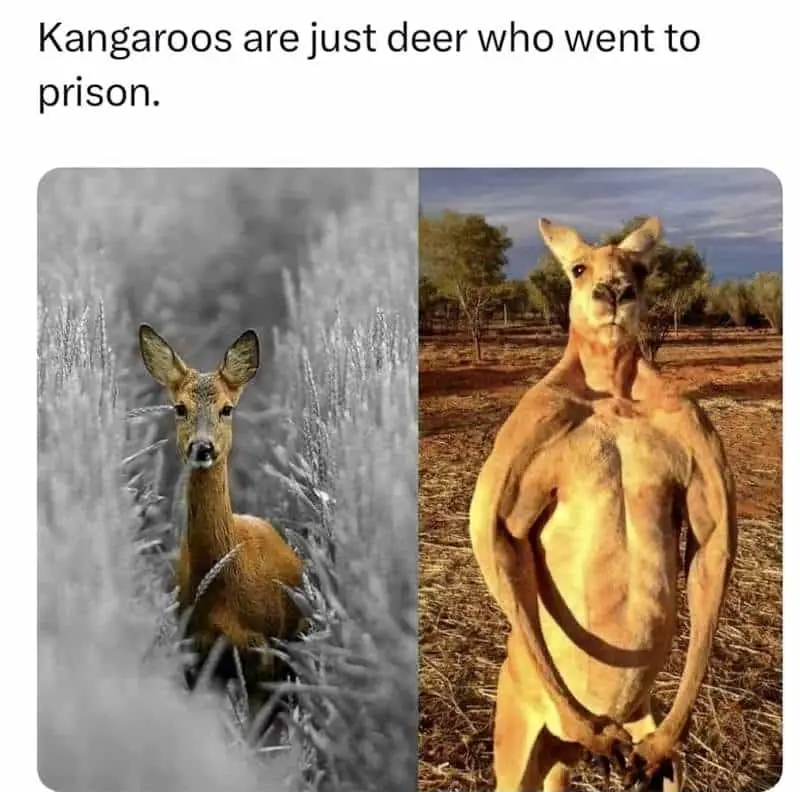
Now we are prepared for a truly Australian gothic desert experience. We are uncomfortably stuck with this guy in the Outback.
DENIZEN BY JAMES MCKENZIE WATSON (2022)
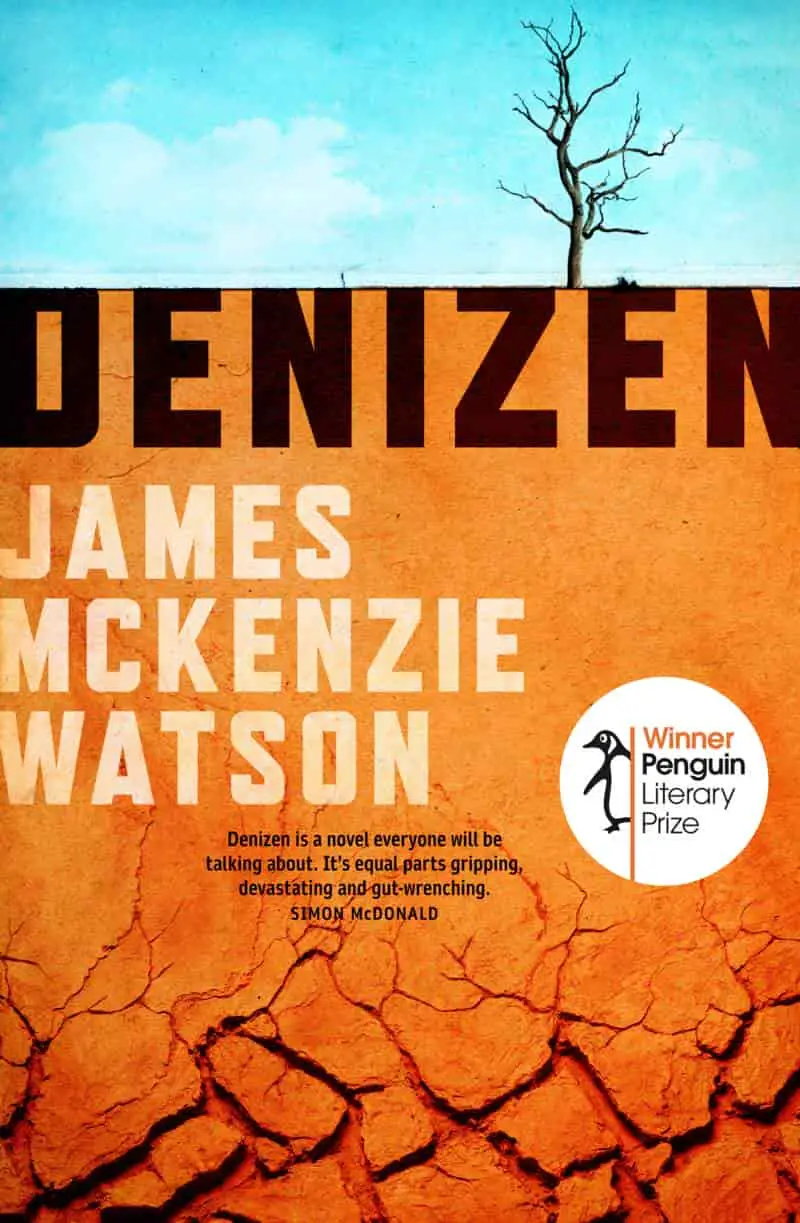
On a remote property in western NSW, nine-year-old Parker fears that something is wrong with his brain. His desperate attempts to control this internal chaos spark a series of events that gallop from his control in deadly and devastating ways.
Years later, Parker, now a father himself, returns to the bushland he grew up in for a camping trip with old friends. When this reunion descends into chaos amid revelations of unresolved fear, guilt and violence, Parker must finally address the consequences of his childhood actions.
A SMALL WEST NSW TOWN
In Gothic thriller Denizen by James McKenzie Watson (2022), Colladai is a fictional town in western NSW which, as is described in the text, doesn’t really mean the west of the state, but west of where most people live. Like many tiny Australian towns, a showground features as a focal point of town.
The Colladai Showground barely earned its name, a muddy paddock on the edge of town, the smell of hay and horse manure choking even in the off-season. During events its sold grandstand was reserved for competitors and officials. so my father and I stood at the skeletal iron fence to spectate.
Denizen by James McKenzie Watson
THE LONG DARK HIGHWAYS
This is the story of a man spiralling into psychosis. In the paragraphs below, this discombobulating, tunnel-like feeling is captured in the opening chapter with a description of the experience of driving at night along one of Australia’s many dark highways:
The world appeared as as speck of light beyond the pinhole of my tunnelled vision and expanded until I could identify shapes: a crescent moon in the twilight, the black ridges of distant hills, plains flashing through gaps in the scrub.
…
[My mother’s] knuckles glowed white in the light of the speedometer, her fists balled around the wheel. Ahead, the bitumen unspooled in the high beams, the tops of the roadside gums swallowed by night.
Denizen by James McKenzie Watson
The author names films such as Wolf Creek, Snowtown and Beautiful Kate as inspiration and notes that his writing predecessors include Patrick White, Joan Lindsay and Kenneth Cook.
As a side note, Australian film and literature is frequently criticised for focusing on bleak and ‘cynical’ themes such as suicide, mental illness and violence. I don’t think that’s fair. Much of rural Australia is staggeringly beautiful and populated by thriving, healthy communities, but it’s also haunted by immutable pasts of colonisation, isolation and hardship. It’s these ghosts, and the intensity of their presence, that the art is responding to. These narratives aren’t coming from nowhere – there might be less ‘depressing’ Australian films and books when the inequities that inspire them are resolved.
James McKenzie Watson, author of Denizen (2022), a psychological thriller and example of Australian gothic
THE DRY BY JANE HARPER (2016)
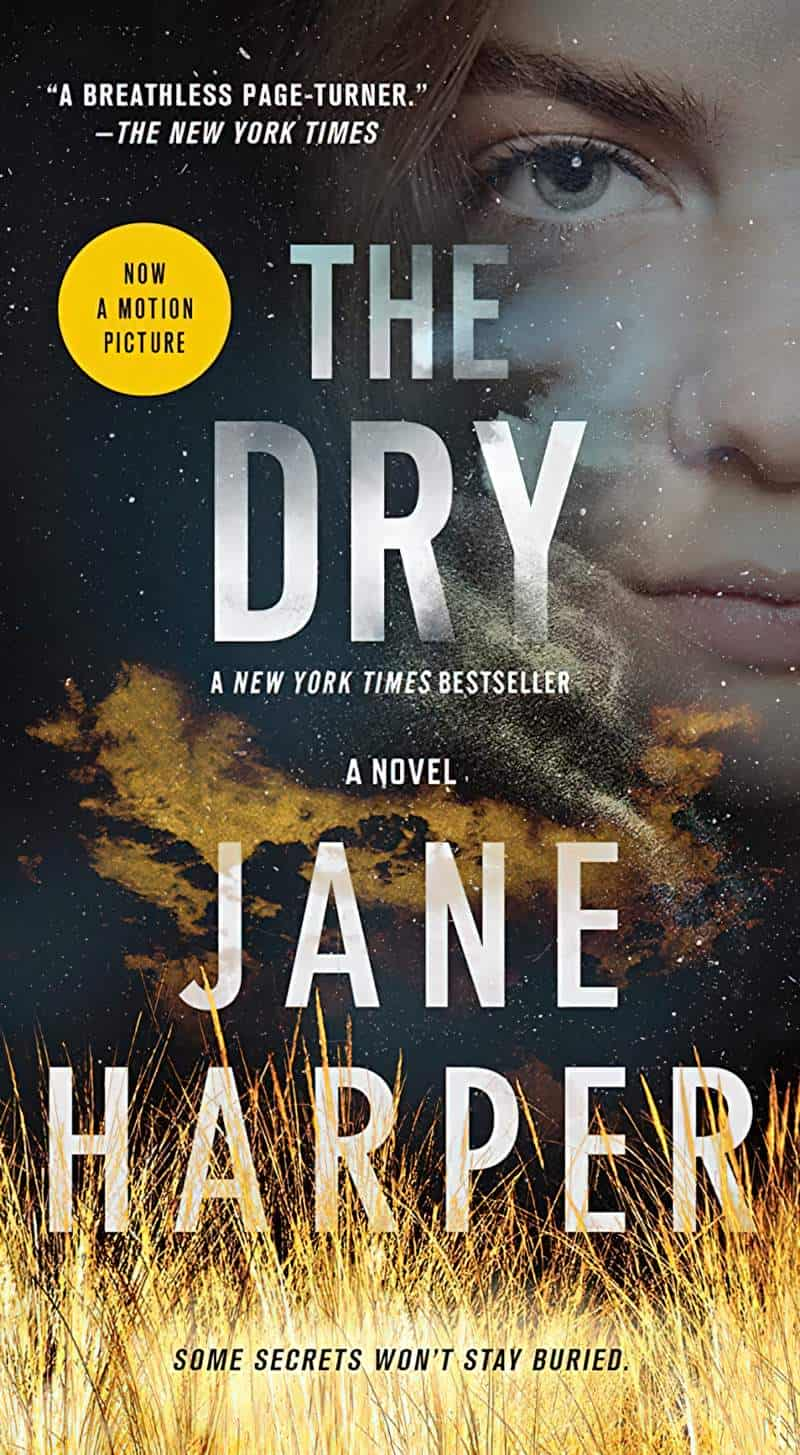
Luke Hadler turns a gun on his wife and child, then himself. The farming community of Kiewarra is facing life and death choices daily. If one of their own broke under the strain, well…
When Federal Police investigator Aaron Falk returns to Kiewarra for the funerals, he is loath to confront the people who rejected him twenty years earlier. But when his investigative skills are called on, the facts of the Hadler case start to make him doubt this murder-suicide charge.
And as Falk probes deeper into the killings, old wounds start bleeding into fresh ones. For Falk and his childhood friend Luke shared a secret… A secret Falk thought long-buried… A secret which Luke’s death starts to bring to the surface…
DEATH, FLIES AND DROUGHT
It wasn’t as though the farm hadn’t seen death before, and the blowflies didn’t discriminate. To them there was little difference between a carcass and a corpse.
The drought had left the flies spoiled for choice that summer. They sought out unblinking eyes and sticky wounds as the farmers of Kiewarra leveled their rifles at skinny livestock. No rain meant no feed. And no feed made for difficult decisions as the tiny town shimmered under day after day of burning sky.
opening to The Dry
Kiewarra is a fictional West Victorian town but it is located approximately where Warragul is.
HEAT AND SEARING SUN
This paragraph combines characterisation with a reminder of the formidable Australian summer heat:
The late-afternoon sun draped itself around him like a blanket. He snatched open the backseat door to get his jacket, searing his head in the process. After the briefest hesitation, he grabbed his hat from the seat. Wide-brimmed in stiff brown canvas, it didn’t go with his funeral suit. But with skin the blue hue of skim milk for half the year and a cancerous-looking cluster of freckles the rest, Falk was prepared to risk the fashion faux pas.
The Dry, Chapter One
EYRIE BY TIM WINTON (2013)
Back to Eyrie by West Australian author Tim Winton, who has said that when writing, “Place comes first. If the place isn’t interesting to me then I can’t feel it. I can’t feel any people in it. I can’t feel what the people are on about or likely to get up to.”
Winton anthropomorphises his familiar Fremantle, thereby describing the culture as he sees it. (I doubt the author—or perhaps must the main character—thinks much of ageing female sex workers.)
Good old Freo. Lying dazed and forsaken at the rivermouth, the addled wharfside slapper whose good bones showed through despite the ravages of age and bad living. She was low-rise but high-rent, defiant and deluded in equal measure, her Georgian warehouses, Victorian pubs, limestone cottages and lacy verandahs spared only by a century of political neglect. Hunkered in the desert wind, cowering beneath the austral sun.
Tim Winton, Eyrie
The following vision comes to readers via a hungover main character, which is a (literally) brilliant way to remind readers of Australia’s searing brightness under sunlight:
At the sliding door to the balcony he looked down beyond the forecourt across the flaring iron rooftops to the harbour. Cranes, containers on the quay in savage yellows, reds, blues; the hectic green superstructure of a tanker’s bridge. Searing flash of sun on canted glass. Everything vivid enough to bring on an ambush.
Tim Winton, Eyrie
And because Fremantle is a seaside town, the sea requires description. How to describe the sea in an original and interesting way? Tim Winton offers a lesson. Notice, too, how masterfully a description of setting via the close third person narrative of a character does double duty, telling us so much about the character:
The sea beyond the breakwater was flat, the islands suspended in brothy haze. An orange pilot boat surged past the moles and out into open water, twin plumes of diesel smoke flagging from its stacks, the wake like a whitening wound on the skin of the sea. Which seemed all very lyrical and seafaring until you cracked the door a little and felt the red-plain wind. More hellish updraught than pastoral uplift. Harsh, pitiless. Laden with grit sharp enough to flay a baby-boomer in the face.
Tim Winton, Eyrie
As the novel progresses, we learn that the main character, the viewpoint character, is a jaded former environmental activist. This absolutely affects the descriptions of setting:
Doris lived in a stately Edwardian weatherboard in a riverside suburb of Perth. From just below her place, at the water’s edge, you could see upstream, past the snaking coils of the river, the thousand-eyed towers of the business district with the shimmering red-roofed plain behind. The hills were shrouded with bushfire haze that formed a dirty yellow rampart against the world beyond. At times Perth really did feel like an island, a country unto itself. This brassy little outpost of digging and dealing tilted relentlessly at the future, but these days it lived on life support—desalinated seawater and ancient shrinking aquifers. Behind the veil of smoke lay the wheatbelt and the salt-ravaged badlands that only a century before had been a teeming woodland half the size of Poland.
Tim Winton, Eyrie
On a Fremantle river in a boat, and no one writes about Australian water life the way Tim Winton writes it. And because we now know the main character (Tom Keely) is an environmentalist, the close third person narrator must possess as much natural knowledge as an environmentalist would:
He steered wide of waterskiers and w*nkers on jetskis, slowed down to take in the terraces and lawns, the swanky boathouses. Gemma turned in her seat, gazed up, wide-eyed, beginning to enjoy herself. He eased them past a chaotic and giggly regatta of little sailboats at Freshie, rounded the point into the next bay. Here picnickers sprawled on blankets beneath the peppermints, dragged kayaks across the obstacle course of fig roots at the bank. Keely didn’t cut the outboard until they were past all of it, deep into the slough where the shore was obscured by a confusion of native cypresses, melaleucas and gnarled gums. Above them a limestone ridge whose brows knitted, hatching everything before it in flickering shadow.
Tim Winton, Eyrie
SCRUBLANDS BY CHRIS HAMMER (2018)
Scrublands is Chris Hammer’s 2018 thriller. Below, he describes a small Australian town which is very recognisable to any Australian who has ever left a main city.
Scrublands is set in two fictional towns—Riversend and Bellington. The landscape and location are real: the western Riverina of New South Wales, “Australia’s Food Bowl”. The publisher includes isometric maps at the beginning of Chris Hammer’s crime novels, which is pretty cool, and reminiscent of middle grade mysteries from childhood.
First, a description of a church:
THE DAY IS STILL. THE HEAT, HAVING EASED DURING THE NIGHT, IS BUILDING again; the sky is cloudless and unforgiving, the sun punishing. Across the road, down by what’s left of the river, the cicadas are generating a wall of noise, but there’s silence surrounding the church. Parishioners begin to arrive for the eleven o’clock service, parking across the road in the shade of the trees. Once three or four cars have arrived, their occupants emerge into the brightness of the morning and cross the road, gathering outside St James to make small talk: stock prices, the scarcity of farm water, the punitive weather. The young priest, Byron Swift, is there, still dressed casually, chatting amiably with his elderly congregation. Nothing seems amiss; everything appears normal.
Scrublands by Chris Hammer
A local—our main character—has been away for years and now returns, seeing his old hometown through fresh eyes. Notice how a description of what there is is followed by a description of what there is not. This is a community affected by drought. Australian authors must come up with ever-more inventive ways to describe the heat and devastation that accompanies drought:
MARTIN SCARSDEN STOPS THE CAR ON THE BRIDGE LEADING INTO TOWN, LEAVING the engine running. It’s a single-lane bridge—no overtaking, no passing—built decades ago, the timber milled from local river red gums. It’s slung across the flood plain, long and rambling, desiccated planks shrunken and rattling, bolts loose, spans bowed. Martin opens the car door and steps into the midday heat, ferocious and furnace-dry. He places both hands on the railing, but such is the heat of the day that even wood is too hot to touch. He lifts them back, bringing flaking white paint with them. He wipes them clean, using the damp towel he has placed around his neck. He looks down to where the river should be and sees instead a mosaic of cracked clay, baked and going to dust. Someone has carted an old fridge out to where the water once ran and left it there, having first painted a sign on its door: FREE BEER—HONOUR SYSTEM. The red gums along the banks don’t get the joke; some of their branches are dead, others support sparse clumps of khaki leaves.
Martin tries lifting his sunglasses, but the light is dazzling, too bright, and he lowers them again. He reaches back into the car and cuts the engine. There is nothing to hear; the heat has sucked the life from the world: no cicadas, no cockatoos, not even crows, just the bridge creaking and complaining as it expands and contracts in thrall to the sun. There is no wind. The day is so very hot, it tugs at him, seeking his moisture; he can feel the heat rising through the thin leather soles of his city shoes. Back in the rental car, air-conditioning straining, he moves off the bridge and down into Riversend’s main street, into the sweltering bowl below the levee banks. There are cars parked here. They sit reversed into the kerb at a uniform forty-five-degree angle: utes and farm trucks and city sedans, all of them dusty and none of them new. He drives slowly, looking for movement, any sign of life, but it’s like he’s driving through a diorama. Only as he passes through the first intersection a block on from the river, past a bronze soldier on a column, does he see a man shuffling along the footpath in the shade of the shop awnings. He is wearing, of all things, a long grey overcoat, his shoulders stooped, his hand clutching a brown paper bag.
[…]
[Martin] walks back towards town, feeling the power of the sun on his back even this late in the day. There are houses abandoned and houses occupied, houses with drought-dead gardens and houses boasting bore-water verdure. He passes the green corrugated-steel shed of the volunteer fire brigade before pausing at the junction with Hay Road, with its shops sheltering beneath their joined awnings. Another photograph.
He continues east along the highway, past a deserted supermarket, its sun-bleached CLOSING DOWN SALE banners still plastered to its doors; past the Shell service station, its owner giving him a friendly wave as he closes up for the night; alongside a park, green grass with more signs—BORE WATER ONLY, a band rotunda and a toilet block for motorists, all sitting below a levee bank. And another bridge, two lanes and concrete, stretching out across the river. Martin draws a map of Riversend in his mind: a T-junction fitted snugly into a curve in the river, with the levee bank cosseting the town to the north and east. Martin likes the layout; there is something considered and self-contained about it. Adrift on the vast inland plain, it anchors Riversend to some sense of purpose.
He scrambles up the side of the levee bank beside the bridge, finding a foot track running along its ridge. He stands and looks back along the highway, wiping sweat from his brow. The horizon is lost in a haze of dust and heat, but he feels he can see the curvature of the earth, as if he’s standing on a headland looking out to sea. A truck thunders across the bridge and past him, heading west. The sun is setting, turned angry and orange by dust, and he watches the truck until it is first contorted, then swallowed whole by the haze.
Martin leaves the road, walking on top of the levee bank. Beside him the riverbed, glimpsed through the gums, is cracked bare mud. He’s thinking the trees look healthy enough, until he comes to a dead trunk, looking as solid as its neighbours, just devoid of leaves. A flock of cockatoos passes overhead, their raucous calls awakening the sounds of other birds and creatures in the twilight. He follows the path until he reaches a curve in the riverbed. Above it, on a natural rise, sits a yellow-brick building, the Riversend Services and Bowling Club, its lights shining out through plate-glass windows above a steel-form deck, like a cruise ship beached at low tide.
Scrublands by Chris Hammer
FURTHER READING
The Dark Swamp: Horror Stories Episode 722: Why Are Australian Park Rangers Hiding This. “In 1987, Patrick Hildebrand was 9 years old and living in Dandenong, Victoria, with his mother, Christine, and two brothers. One summer weekend, they visited the beautiful Wilsons Promontory National Park. This trip would, unfortunately, fundamentally change the Hildebrands’ lives forever. This is the mysterious story behind Patrick Hildebrand.
I think some of the most sinister places in Australia are actually the suburbs.
Crime writer Chris Hammer shares his secrets to writing murder mysteries
